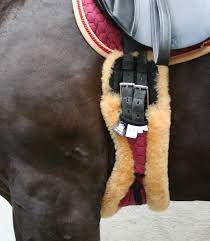
Let’s face it, the horse girth isn’t the most glamorous piece of tack. It’s often overlooked, yet it plays a crucial role in your horse’s comfort and overall riding experience. You could have the perfect saddle, saddle pad, and bridle, but if your girth doesn’t fit properly, your horse could suffer discomfort, even injury, and for you, that can mean slipping saddles, compromised performance, and frustration in the saddle.
Finding the best horse girths can feel overwhelming. The options are endless, with countless shapes, styles, and materials on the market, where do you even begin?
That’s why we’ve created this comprehensive horse girth buying guide to simplify your search.
At Pink Equine, we’ve helped hundreds of riders find horse girths that combine comfort, fit, and long-term reliability. Over time, through extensive research, hands-on testing, and years of fitting experience, we’ve narrowed our recommendations down to just two brands.
These two manufacturers have consistently delivered outstanding results across a wide range of horses and disciplines. Their quality, performance, and design have enabled us to become true specialists, confident in advising what will (and won’t) work for a particular horse or pony.
As you read through this guide, you’ll learn more about these two brands — including how they compare to other popular names in the industry — so you can make the most informed decision possible.
In this expert guide, you’ll learn everything you need to know about choosing the right girth, from sizing and materials to tackling common girthing problems. Whether you’re new to riding, have a specific problem, or simply upgrading your tack, our best girth for horses recommendations are here to help you make a confident, informed decision.

While this guide provides a comprehensive overview, we also offer more focused advice on specific girthing challenges that riders face every day, such as slipping saddles, sensitive horses, or awkward conformation. Throughout this article, you’ll find links to detailed resources where we recommend specific girths from the two brands we know and trust, based on the issue at hand.
And of course, if you’re unsure what’s best for your horse, we also offer a free personalised fitting consultation — so you’ll never have to guess.
A horse girth is a wide, often padded strap designed to securely hold the saddle in place on a horse’s back. It wraps around the horse’s belly and attaches to the saddle via straps known as billets, leather straps that hang down from the saddle’s panels.
On English saddles you’ll typically find two or three billets on each side, while a Western saddle employs a single, broad billet and a cinch-style girth. Most English riders attach the girth to the first and third billets to ensure better balance and pressure distribution. Regardless of the discipline, the girth should sit in the horse’s natural groove, just behind the front legs.
Why does this matter so much? A poor-fitting girth can cause significant discomfort, rubbing, or even long-term injury. It can restrict movement, alter saddle position, and negatively impact performance. And a slipping saddle whether forward or back—is not just frustrating, it’s unsafe.
Choosing the best horse girths isn’t just about finding something that fits, it’s about investing in your horse’s well-being. The right girth will distribute pressure evenly, allow a full range of motion, and enhance your riding experience. Throughout this horse girth guide, we’ll explain how to choose a girth that does exactly that.
Finding the best horse girth starts with understanding your horse’s body shape, your riding discipline, and saddle setup. No two horses or ponies are exactly alike and their conformation plays a key role in girth fit and saddle stability.
Some horses have excellent conformation, with a naturally defined girth groove that allows the girth to sit comfortably behind the elbow. Others, especially round barrelled horses or those with forward girth grooves may experience girth slippage, pinching and rubbing if you choose the wrong shape.
These conformation differences can lead to pressure points, girth galls, or saddle instability. In these cases, crescent, asymmetric or anatomical girth designs often provide the best solution.
Your riding discipline also influences your choice. Dressage saddles, especially monoflap styles, require short girths to reduce bulk under the rider’s leg. All-purpose and jumping saddles typically use longer girths, while jumping and cross country riders may prefer a stud or belly guard girth for added protection. We cover that in our guide to the best girths for jumping (coming soon).
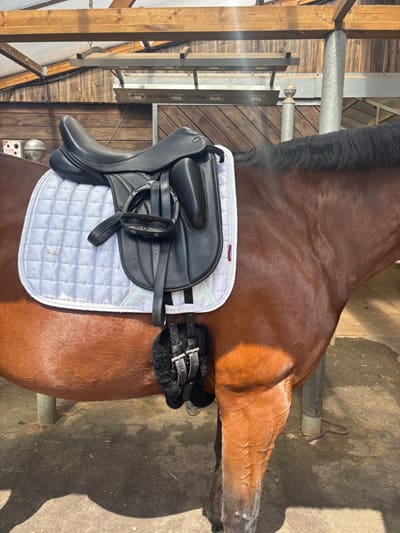

For Western riders cinches or western girths are entirely different with only one large buckle and should be selected accordingly — check out our best Western girths guide (coming soon).
Lastly, consider your tack setup: Does your saddle have two or three billets? Is it balanced? Do you use correction pads or shims in your saddle pad, that may affect girth pressure?
Still unsure what’s right for your horse? Start here: best girths for horses. (coming soon).
Unfortunately, finding the best horse girth isn’t just about fit, it’s also about solving the everyday problems that impact your horse’s comfort and performance. A poor fitting girth can cause a range of issues such as saddle instability for the rider, to skin irritation, rubbing or pinching and girth galls for the horse.
One of the most frequent issues is uneven pressure distribution. Girths that apply pressure too narrowly can lead to soreness, bruising and discomfort. Similarly, inadequate shaping or rigid construction can restrict movement or rub against sensitive skin.
Materials matter too, synthetic options like plastic, neoprene, or gel may trap heat and sweat, increasing the risk of skin irritation. Similarly string girths can pinch or twist against the horse’s skin if they don’t fit properly. In severe cases and continuous use of a poor fitting girth, your horse may suffer from girth galls. We explore this more in our article on the best cinch for girth galls. (coming soon).
Another common frustration is Saddle slippage, whether it’s sliding backwards on round barrelled horses, or creeping forward on horses with a forward girth groove. This issue is often caused by a mismatch between the girth’s shape and the horse’s conformation and the solution lies in choosing the right girth shape. Learn more in our guides to the best girths for a slipping saddle. (coming soon), and the best girths to stop saddle slipping forward. (coming soon).
For horses with a forward girth groove or a round barrel, a standard girth might not stay in place. In these cases, specially designed asymmetric or crescent-shaped girths can help. Learn more in our guides to the best girth for forward girth grooves. (coming soon), and the best girths for round horses. (coming soon).
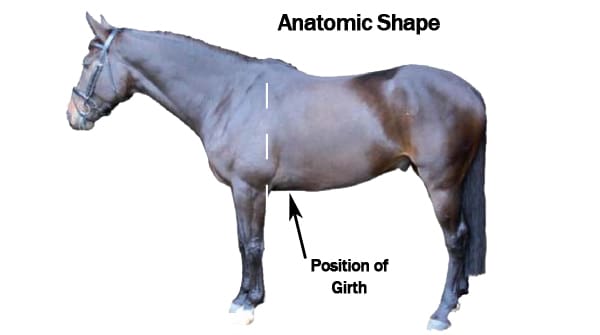
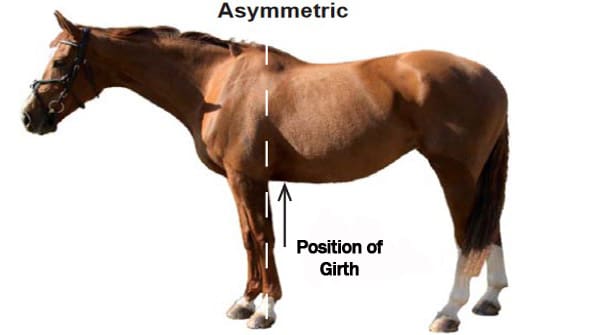
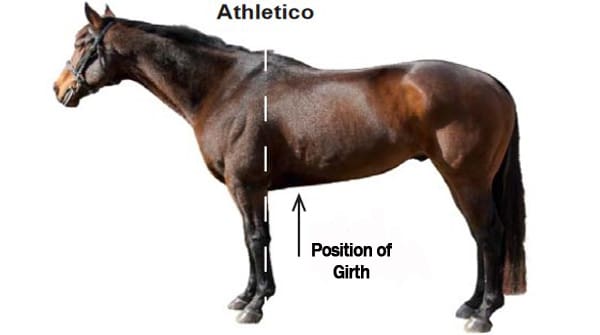
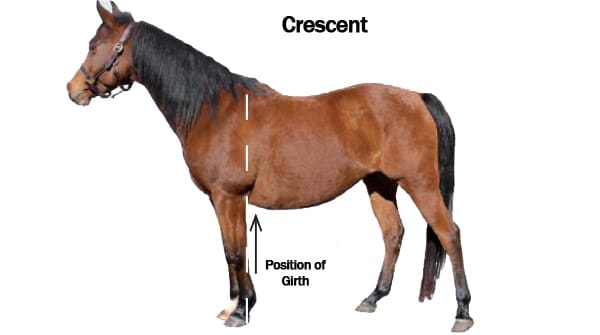
Some horses are just extra sensitive, particularly behind the elbow. If your horse shows signs of irritation or girthiness, you may need a softer or sheepskin-lined model. We’ve covered this in detail in our article on the best girths for sensitive horses and specifically for dressage in the best dressage girths (coming soon) and the best dressage girths for sensitive horses. (coming soon)
Ultimately, choosing the right girth is about more than avoiding problems, it’s about finding the most comfortable and secure option for your individual horse or pony and why our girth guide focuses so heavily on fit, comfort and conformation.
Still not sure what’s causing the issue, or what girth your horse really needs? We offer a free consultation service where our girth-fitting experts can assess your horse’s shape, tack setup, and riding style. Just click the link below and fill out the form, send a couple of pictures of your horse or pony, and we’ll help you find the most comfortable, effective option.
When it comes to choosing the best horse girth, getting the right size is just as important as choosing the right shape or material. A girth that’s too short can cause pinching or uneven pressure, while one that’s too long may interfere with your saddle flaps, sit in the wrong position, and ultimately cause your saddle to slip.
The correct size horse, pony or cob girth depends on your saddle type, billet length, and your horse’s overall conformation. This part of our horse girth guide walks you through the essentials.
Short girths are typically used with long-billet saddles. Unlike long girths, they’re not measured buckle to buckle.
We have found the most accurate method of measuring is:
This allows the buckles to sit comfortably above the elbow, avoiding pressure points or pinching.
📌 Note: Some other brands may use different measuring methods, but we have found that for the girths we sell, this provides the most accurate girth measurements.
Long girths are used with short-billet saddles and are usually measured buckle end to buckle end.
The girth should sit about a hand’s width below the saddle flap and fasten around the middle billet holes.
Western riders girths are a different shape and require separate sizing guidance. We explain those measurements in How to do up a western girth (coming soon).
Need a step-by-step visual? Explore our detailed guides:
If you are not sure, our free consultation service includes expert advice on sizing, fit, and conformation issues.
There’s no one-size-fits-all when it comes to girths, and understanding the different types is key to finding the best horse girths for your setup. Girths vary by shape, design, and purpose, depending on your horse’s conformation and the discipline you ride.
The most basic style is the straight girth, symmetrical, evenly shaped from end to end and typically suited to horses with standard conformation. While simple, these can sometimes cause pressure points, particularly on horses with forward girth grooves or sensitive elbows.

Anatomical girths are shaped to curve behind the horse’s elbows, providing better clearance, reducing pressure and allowing for greater freedom of movement. For more challenging body types, different anatomical shapes will provide targeted relief and improved saddle stability.
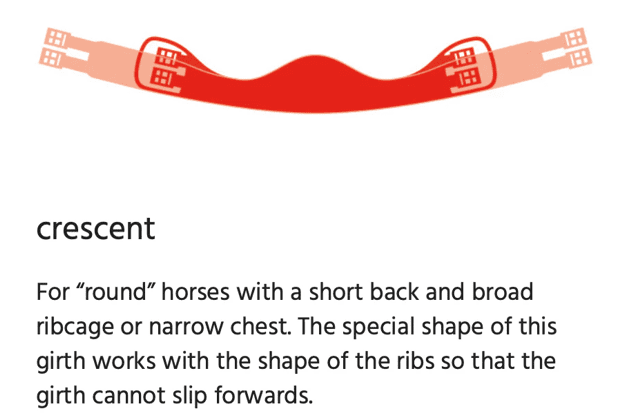
If you jump or ride cross-country, a stud girth, sometimes called a belly guard, protects your horse’s underside from strikes during takeoff. These have a wider protective plate which is padded, making them ideal for impact-heavy disciplines.
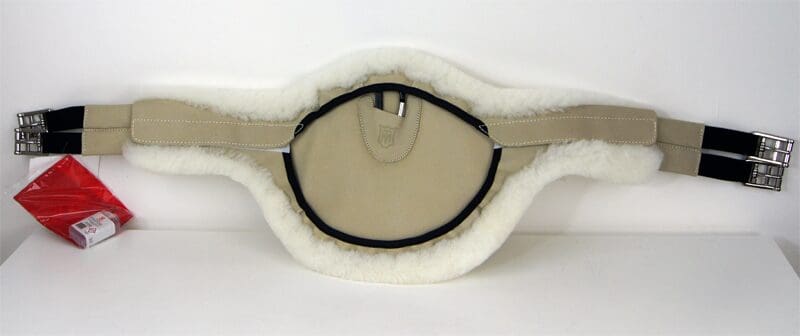
Sometimes, the best option is a custom horse girth made to fit your horse’s exact shape. This is particularly useful if your horse has specific issues, or you want control over materials, colours, and fittings.
Looking for more details? Check out our guide to custom horse girths (coming soon), or read up on finding the best saddle girth for your setup (coming soon).

Material choice is another vital factor when choosing the best horse girths. Each material affects comfort, breathability, and ease of care — all of which can influence your horse’s skin health and overall performance.
A classic choice and renowned for its durability and breathability, leather molds to the horse’s shape over time, offering a custom fit. It’s breathable, resilient, and offers a premium feel. However, it does require regular conditioning to maintain its flexibility and prevent cracking. Many riders prefer it for its classic appearance and longevity.
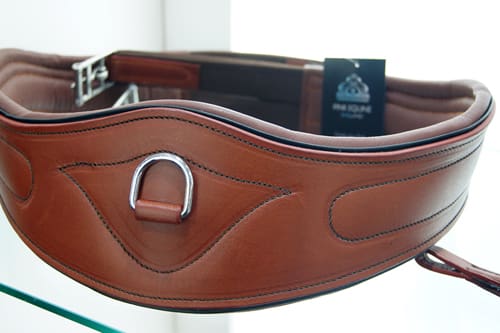
Synthetic leather girths are often more affordable and easier to clean, but they can lack the softness, breathability, and structure of real leather. The material may feel plasticky and uncomfortable to the touch, with some designs being overly flexible or unstable, potentially leading to uneven pressure distribution and reduced comfort for the horse.
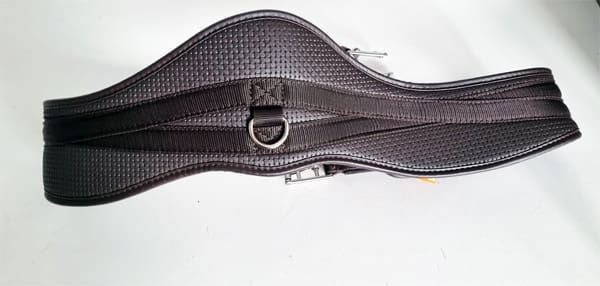
Neoprene girths are popular for being flexible and easy to clean, but they can trap heat and sweat, potentially leading to chafing or skin irritation.
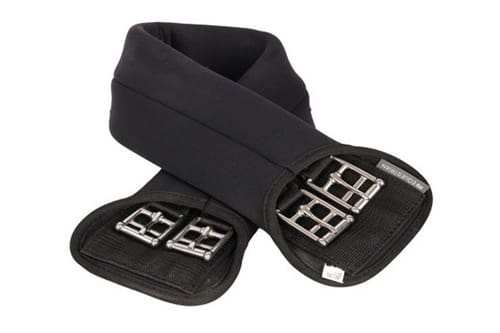
Designed to distribute pressure evenly, memory foam girths can enhance comfort. Nevertheless, they may lack breathability and can become unstable under rapid movements, potentially compromising saddle stability.
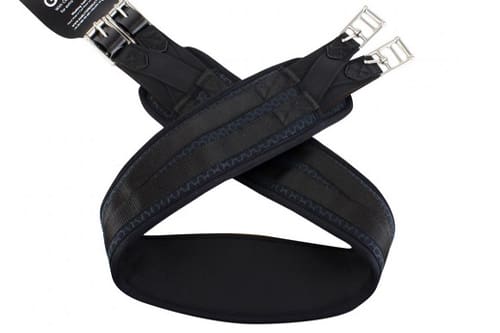
Ideal for sensitive horses, fleece and sheepskin girths offer excellent cushioning and moisture-wicking properties. Natural sheepskin is breathable and gentle on the skin, though it requires diligent cleaning to maintain its softness and prevent matting. It should be noted that we are talking about real sheepskin, the entire hide of the sheep with the wool still attached and processed, and not a wool substitute that is not attached to the hide.

Made from multiple cords, string girths provide good airflow and flexibility. However, if not properly fitted, they can cause pinching and discomfort.
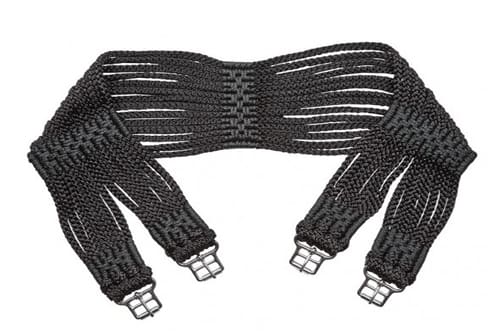
When selecting a girth, consider your horse’s specific needs, sensitivity, and the demands of your riding discipline. For more detailed comparisons and recommendations, explore our articles on best leather girths (coming soon), neoprene girths (coming soon), synthetic girths (coming soon), and best fleece dressage girths (coming soon).
A well-maintained girth lasts longer, performs better, and helps keep your horse comfortable. Different materials require different care routines, and neglecting this can lead to cracked leather, matted fleece, or skin irritation.
Leather needs regular cleaning and conditioning to stay supple and prevent cracking. Use a gentle saddle soap followed by a quality leather balm or oil to keep the leather enriched and flexible. Always allow it to dry naturally, away from heat.
Read more: How to care for a leather girth (coming soon).
Sheepskin-lined girths are incredibly comfortable for sensitive horses, but they do require special care. Some brands have created their own detergent specifically formulated to clean sheepskin and preserve its natural lanolin, which keeps the hide soft and the wool bouncy. Avoid regular detergents, as they can dry out or damage the sheepskin.
Always check for wear, loose stitching, or cracking, especially near the buckles and elastic ends. Clean sweat, hair, and dirt buildup regularly to avoid irritation or sores.
Read more: How to clean a fleece girth (coming soon).
For a full breakdown of care routines, best products, and cleaning schedules, see our expert article on the best cleaning products for horse girths (coming soon).
Throughout this guide, we’ve talked about only two brands that in our experience offer the best girthing solutions for our customers. For those that prefer sheepskin lined girths the brand is Mattes and for those that prefer traditional leather the brand is Pink Equine. Now let’s take a closer look at why they’ve earned that trust, and how they compare to some of the most popular alternatives.
When it comes to comfort, performance, and craftsmanship, both Pink Equine and Mattes girths offer exceptional quality, but each brand has its strengths and serves slightly different needs.
Mattes are world-renowned for their anatomical shaping and sheepskin lining. Their girths come in a variety of highly specific shapes, including anatomic, asymmetric, crescent, and Athletico — designed to fit horses with forward girth grooves, round barrels, or narrow chests. The natural sheepskin reduces friction and improves airflow, making it ideal for sensitive horses or those prone to rubbing.
Learn more:Anatomical Girths, benefits and fitting advice (coming soon).
Learn more: Mattes girth Guide Which Style?
Pink Equine girths are beautifully hand crafted in high-quality Italian leather, double stitched and designed with both form and function in mind. They’re an excellent choice for horses with standard conformation, or for riders who prefer the feel and look of natural leather over sheepskin. Choose from a range of ergonomic long girths, dressage girths, and stud girths, all made to last, and available with custom styling options.
If your horse has unique fitting challenges, Mattes may be the better fit. But if you want a stylish, well-made leather girth with solid performance and comfort, Pink Equine delivers.
It’s no secret that some girth brands are more well-known than others, but popularity doesn’t always equal quality. Brands like LeMieux, Professional’s Choice, Total Saddle Fit, and Prolite have made their names through strong marketing, wide colour options, and affordability.
Mattes may not be as well known as some of the other Brands, but when it comes to fit, materials, and long-term performance, their girths stand apart. The design and anatomical shaping, patented pressure distribution system, natural sheepskin, and unprecedented customisation, not to mention the level of craftmanship behind each girth, offer a level of comfort and durability that mass-produced brands struggle to match. Whether you’re dealing with saddle slipping, sensitive skin, or hard-to-fit conformation, Mattes girths deliver real solutions.
While other brands may be suitable for fashion, casual or budget-conscious riders, we believe choosing the best horse girths means putting your horse’s comfort first. And when you compare side-by-side, fit, build, and materials, the difference becomes clear.
So if your curious as to how Mattes stacks up, don’t miss our head-to-head comparisons with top-selling brands. You might be surprised at what you discover when comparing horse girths feature for feature.
Start with:
Le Mieux Girth vs Mattes (coming soon):
Professionals choice vs Mattes (coming soon):
Total Saddle Fit vs Mattes (coming soon):
Prolite vs Mattes (coming soon).
Beyond shape and material, the finer details of a girth can make a real difference in comfort, functionality, and ease of use.
Many girths offer elasticated ends, which provide a bit of give as the horse moves and breathes. While some riders prefer the added stability of non-elastic girths, elastic ends can help reduce pressure and improve comfort, particularly for sensitive horses. Mattes gives you the option to choose elastic or non-elastic ends when ordering.
Buckle covers are another valuable feature. These help protect the skin behind the elbows and prevent pinching, especially on short girths. All Mattes English short girths can be ordered with buckle covers for extra comfort and protection.
D-rings come as standard on all Mattes English girths, offering convenient attachment points for training aids or martingales. Their Western cinches include two D-rings for greater versatility.
One of the standout features of Mattes girths is their removable sheepskin covers, easy to clean, replace, or customise to suit your needs.
Looking for something truly tailored? Explore your options with a custom horse girth made to fit both your horse’s body and your personal preferences.
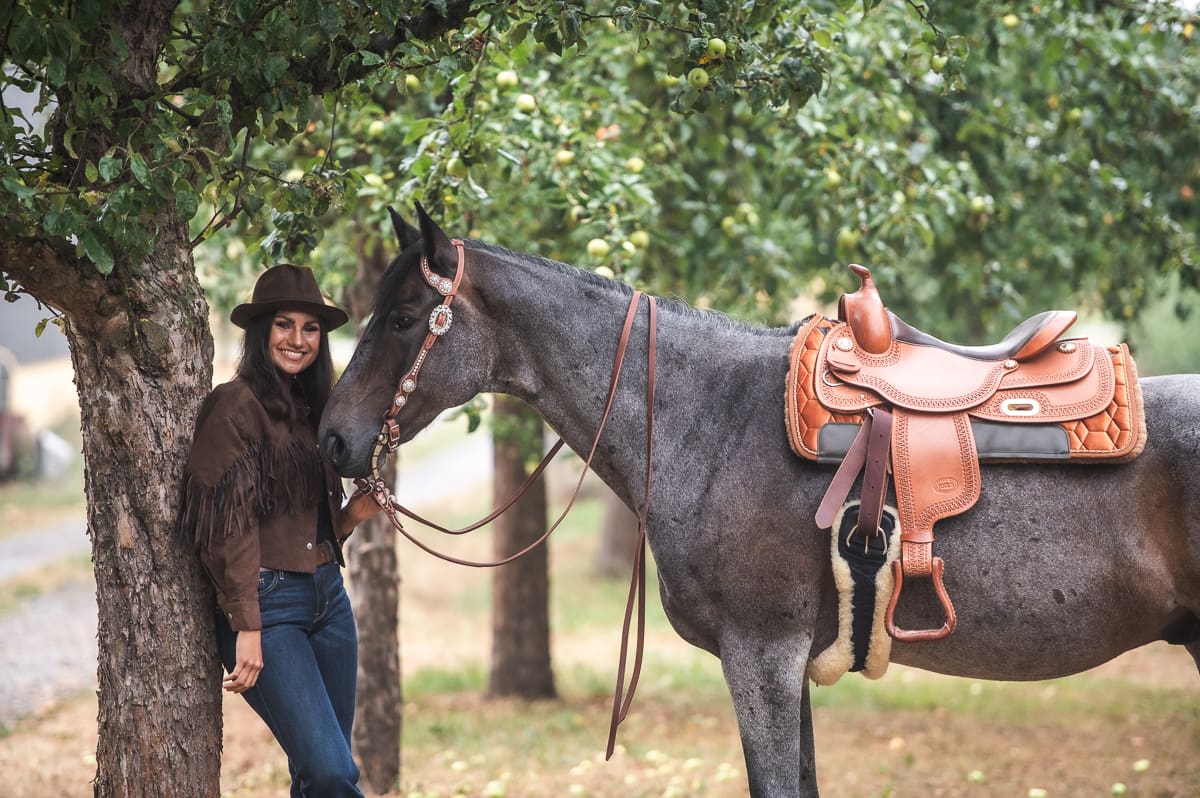
Here are some of the most commonly asked questions from riders searching for the best horse girths:
A.The girth should be snug enough to keep the saddle securely in place without causing discomfort. A general guideline is that you should be able to slide two to three fingers between the girth and your horse’s side. It’s advisable to tighten the girth incrementally: first, secure it lightly, then walk your horse for a few minutes to allow them to relax and adjust, and finally, check and tighten it again before mounting.
A.Regular inspection is key. If you notice signs of wear such as cracking leather, frayed stitching, stretched elastic, or any damage that could compromise safety, it’s time to replace the girth. Even the top horse girths need replacing after extended use, but with proper care, a high-quality leather or sheepskin girth can last several years. Always prioritise safety and comfort over extending the lifespan of equipment.
A.Generally, no. Different saddle types require different girth lengths and styles. For example, dressage saddles typically have longer billets and use shorter girths, while jumping saddles have shorter billets and require longer girths. Using an ill-fitting girth can affect saddle stability and your horse’s comfort.
What are the signs that my girth doesn’t fit properly?
Indicators include saddle slippage, girth galls, behavioural signs of discomfort during girthing (such as ear pinning or biting), and uneven sweat patterns. A properly fitting girth should distribute pressure evenly and not interfere with your horse’s movement.
A.Elastic can provide flexibility and comfort, allowing the girth to move with your horse’s breathing. However, too much elasticity can lead to saddle instability. Some riders prefer elastic on one end or none at all, depending on their horse’s needs and the discipline.
A.Belly guard (or stud guard) girths are designed to protect against injuries from studs during jumping. While they can be used for flatwork, they are bulkier and may not be necessary for everyday riding unless your horse requires that specific protection.
Choosing the best horse girth isn’t just about keeping your saddle in place, it’s about protecting your horse’s comfort, freedom of movement, and health and long-term soundness.
We’ve walked you through the key steps, from understanding your horse’s conformation and identifying the right girth type, to resolving fit issues, comparing materials, and evaluating trusted brands like Mattes and Pink Equine. For more specialist topics, you’ll also find links to in-depth guides throughout this article.
If you’re confident in what you need, browse our curated selection of Pink Equine and Mattes girths below. Both brands offer exceptional quality with options tailored to a wide range of riding styles and horse types, so it’s just about choosing what fits your horse and your riding goals best.
Still deciding? We’re here to help. Our team has fitted hundreds of horses and can recommend the best girth based on your horse’s shape, your discipline, and your tack setup. Just fill in the form below for free, personalised advice, no pressure, no guesswork.
Get Free Expert Girth Advice – Submit Your Consultation here
Your horse deserves the best, and we’re here to make sure they get it.